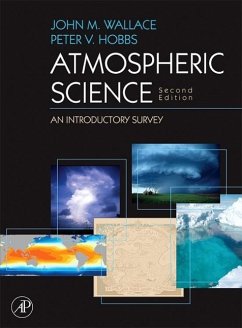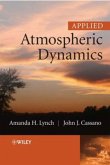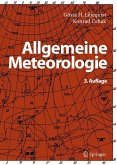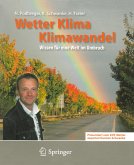Atmospheric Science, Second Edition, is the long-awaited update of the classic atmospheric science text, which helped define the field nearly 30 years ago and has served as the cornerstone for most university curricula. Now students and professionals alike can use this updated classic to understand atmospheric phenomena in the context of the latest discoveries, and prepare themselves for more advanced study and real-life problem solving.
This latest edition of Atmospheric Science, has been revamped in terms of content and appearance. It contains new chapters on atmospheric chemistry, the Earth system, the atmospheric boundary layer, and climate, as well as enhanced treatment of atmospheric dynamics, radiative transfer, severe storms, and global warming. The authors illustrate concepts with full-color, state-of-the-art imagery and cover a vast amount of new information in the field. Extensive numerical and qualitative exercises help students apply basic physical principles to atmospheric problems. There are also biographical footnotes summarizing the work of key scientists, along with a student companion website that hosts climate data; answers to quantitative exercises; full solutions to selected exercises; skew-T log p chart; related links, appendices; and more. The instructor website features: instructor's guide; solutions to quantitative exercises; electronic figures from the book; plus supplementary images for use in classroom presentations.
Meteorology students at both advanced undergraduate and graduate levels will find this book extremely useful.
This latest edition of Atmospheric Science, has been revamped in terms of content and appearance. It contains new chapters on atmospheric chemistry, the Earth system, the atmospheric boundary layer, and climate, as well as enhanced treatment of atmospheric dynamics, radiative transfer, severe storms, and global warming. The authors illustrate concepts with full-color, state-of-the-art imagery and cover a vast amount of new information in the field. Extensive numerical and qualitative exercises help students apply basic physical principles to atmospheric problems. There are also biographical footnotes summarizing the work of key scientists, along with a student companion website that hosts climate data; answers to quantitative exercises; full solutions to selected exercises; skew-T log p chart; related links, appendices; and more. The instructor website features: instructor's guide; solutions to quantitative exercises; electronic figures from the book; plus supplementary images for use in classroom presentations.
Meteorology students at both advanced undergraduate and graduate levels will find this book extremely useful.
"Wallace and Hobbs...offer this excellent update of an outstanding introductory work. The organization of the book is very clear. Each chapter is well laid out with clear diagrams, good quality figures, and explanatory text. ...A first-class resource book. Summing Up: Highly recommended." -- CHOICE
"In terms of both content and appearance, this title has been completely revamped from the first edition. It contains new chapters on atmospheric chemistry, the Earth system, climate, and the atmospheric boundary layer, as well as enhanced treatment of atmospheric dynamics, weather forecasting, radiative transfer, severe storms, and human impacts, such as global warming. The authors illustrate concepts with colorful state-of-the-art imagery and cover a vast amount of new information in the field." --Bulletin of the American Meteorological Society
"Wallace and Hobbs' classic text has been completely updated in content and appearance...Qualitative and numerical exercises are included to reinforce learning, and biographical footnotes summarize the work of key scientists and the history of meteorology. The exercises and lessons are accompanied by full-color illustrations, satellite images, and ground-based photos." --Weatherwise
"In terms of both content and appearance, this title has been completely revamped from the first edition. It contains new chapters on atmospheric chemistry, the Earth system, climate, and the atmospheric boundary layer, as well as enhanced treatment of atmospheric dynamics, weather forecasting, radiative transfer, severe storms, and human impacts, such as global warming. The authors illustrate concepts with colorful state-of-the-art imagery and cover a vast amount of new information in the field." --Bulletin of the American Meteorological Society
"Wallace and Hobbs' classic text has been completely updated in content and appearance...Qualitative and numerical exercises are included to reinforce learning, and biographical footnotes summarize the work of key scientists and the history of meteorology. The exercises and lessons are accompanied by full-color illustrations, satellite images, and ground-based photos." --Weatherwise








